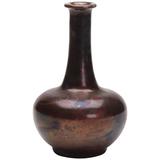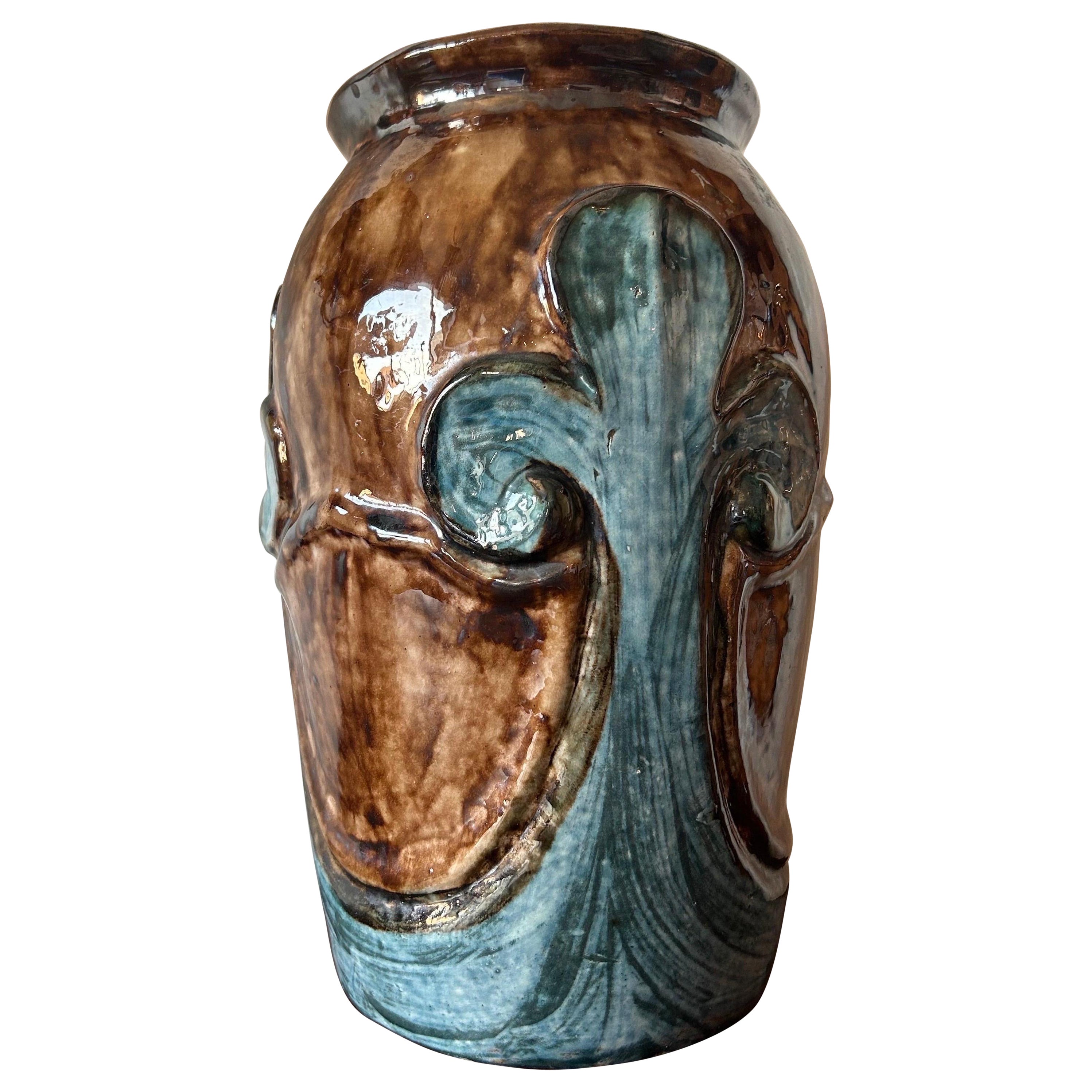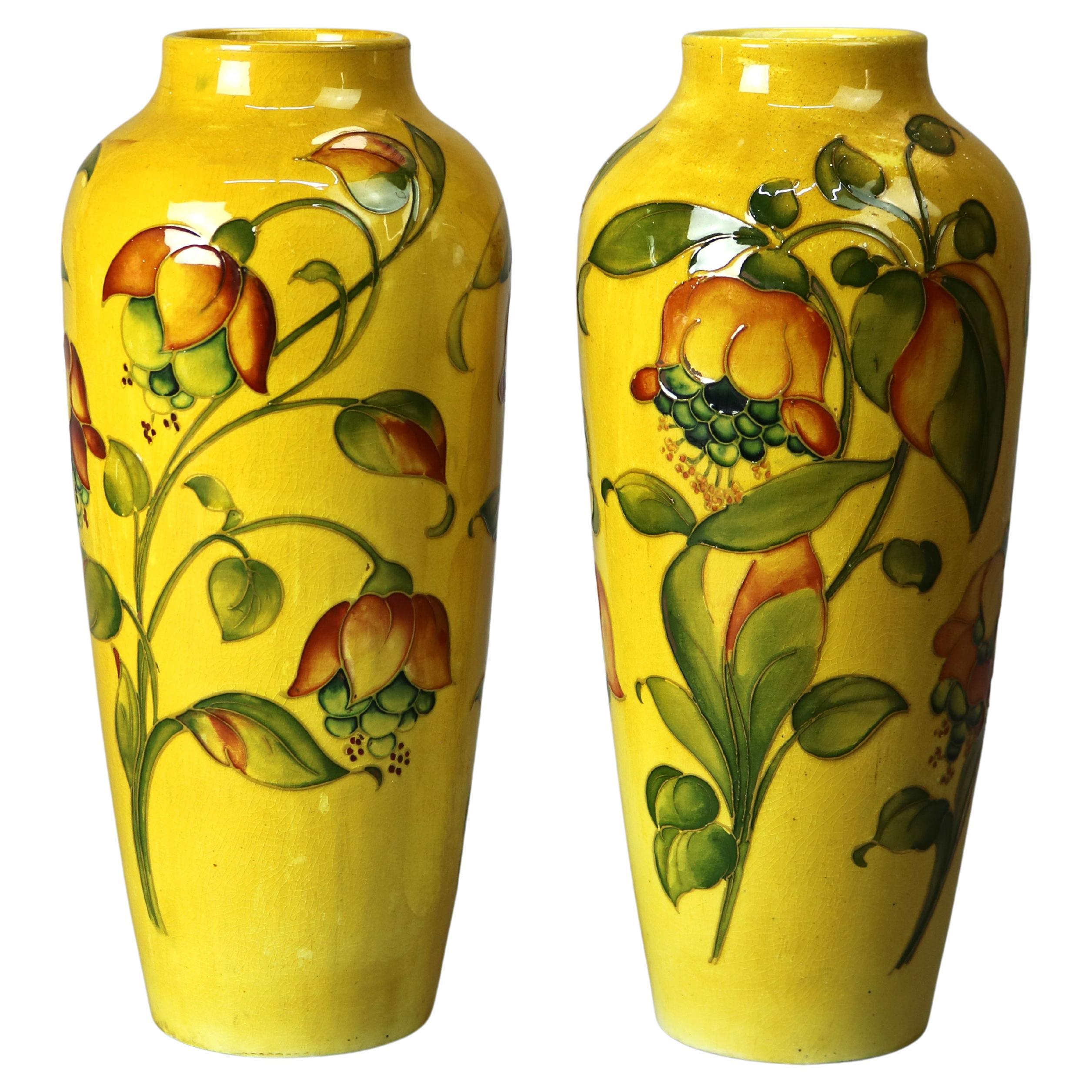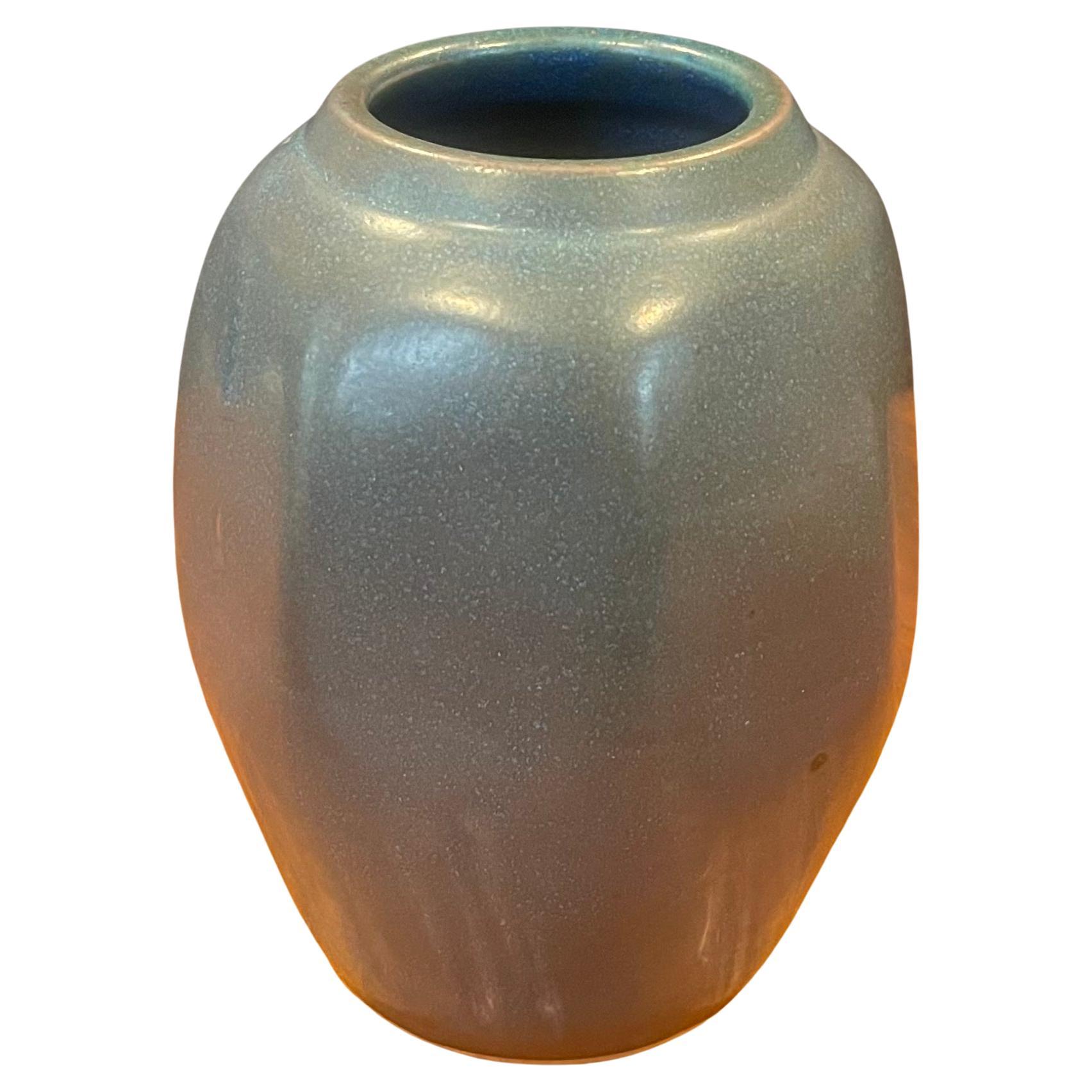Items Similar to Frederic Rhead, a Pair of Arts & Crafts Terracotta Vases with Peacocks, ca. 1900
Want more images or videos?
Request additional images or videos from the seller
1 of 11
Frederic Rhead, a Pair of Arts & Crafts Terracotta Vases with Peacocks, ca. 1900
About the Item
Frederic Rhead, a pair of English Arts & Crafts Glazed terracotta vases with Peacocks, circa 1900.
This outstanding pair of English Arts & Crafts glazed terracotta vases with peacocks was designed by Frederic Hurten Rhead for Wileman & Co., and produced by the company in the early 1900s.
Dimensions:
Height: 14-1/2 inches
Diameter (top): 4-1/8 inches
Diameter (bottom): 6-1/2 inches
Frederick Hurten Rhead (1880–1942) was a ceramicist and a major figure in the Arts and Crafts movement. A native of England, he worked as a potter in the United States for most of his career. In addition to teaching pottery techniques, Rhead was highly influential in both, studio and commercial pottery. He worked for the Roseville Pottery, than established his own Rhead Pottery (1913–1917); and in 1935, he designed the highly successful Fiesta ware for Homer Laughlin China Company. Today, Frederick Rhead's work is displayed in all major art museums around the world.
- Creator:Frederick Hurten Rhead (Designer)
- Dimensions:Height: 14.5 in (36.83 cm)Diameter: 6.5 in (16.51 cm)
- Sold As:Set of 2
- Style:Arts and Crafts (Of the Period)
- Materials and Techniques:Terracotta,Glazed
- Place of Origin:
- Period:1900-1909
- Date of Manufacture:1900s
- Condition:Wear consistent with age and use. We make our best effort to provide a fair and descriptive condition report. Please examine the photos attentively. Send us a message to request more details or discuss price.
- Seller Location:New York, NY
- Reference Number:1stDibs: LU2819314755241
About the Seller
5.0
Vetted Seller
These experienced sellers undergo a comprehensive evaluation by our team of in-house experts.
Established in 1993
1stDibs seller since 2017
68 sales on 1stDibs
Typical response time: 2 hours
- ShippingRetrieving quote...Ships From: New York, NY
- Return PolicyA return for this item may be initiated within 10 days of delivery.
More From This SellerView All
- French Beaux Arts, Patinated Bronze Figural Vase by A. Bofill, Ca. 1900By Antoine BofillLocated in New York, NYAntoine Bofill (Spanish-French, 1875-1925) was a Spanish artist and member of the Animalier movement of the 19th century. Best known for his small, decorative bronze sculptures, Bofi...Category
Antique Early 1900s French Beaux Arts Vases
MaterialsBronze
- French Art Nouveau Patinated Bronze Sculptural Iris Vase, ca. 1900Located in New York, NYABOUT IRIS The iris is a special and mysterious flower. Not only because of its striking appearance, but also from an artistic and historical point of view. It is also like a work of art, as though created by Mother Nature. The unique leaves of this plant not only create wonderful shadow casts, but also look as if they were painted by hand. It's no wonder that iris acts as the muse for countless artists, and can be seen in many famous works of art. The iris was first spotted in the time of Pharaoh Thutmose, in 1504 BC. He had the iris inscribed into the wall reliefs of a temple as a sign of his power, as well as decorating his sceptre with motifs of the flower. Since then, the iris has been a symbol of victory in Egypt. But the symbolism of the iris goes further than that. In Japan, the flower represents courage and is the symbol of the boys' festival. In Islamic cultures, the iris is a symbol of prosperity. In Europe, the flower was a popular weapon symbol in the Middle Ages and stood for chivalry. And in Christianity, the iris was seen as a symbol of the trinity because of its three-part flowers. With more than 300 varieties, the iris is now the most popular flower among growers and gardeners following the rose. Countless artists use the iris in their works and the flower is present in all eras. You can see the flower on furniture, vases, jewelry, fabrics, sculptures, coats of arms and much more. Did you know that the iris is also called the sword lily? It's not a coincidence that it used to symbolize physical and emotional pain and suffering caused by a weapon. We also see the flower in religious art, where it's often associated with Mary and Jesus. The iris is also associated with the Greek goddess Iris, where the flower symbolizes reconciliation and divine messages. This is also reflected in many paintings. Finally, the iris is also visible in Dutch and Flemish still-life paintings. This can be in a religious form, incorporated into an object or as a decorative flower. In the Art Nouveau art movement, the iris (along with other plants, such as the birch) was often used as an expression of feminine beauty. With its almost otherworldly appearance, the iris is perfectly suited to the Art Nouveau aesthetic and is featured in many well-known works of art. The poet of that era, Hermann Hesse...Category
Antique Early 1900s French Art Nouveau Planters, Cachepots and Jardinières
MaterialsBronze
- After Loetz, Bohemian Jugendstil Iridescent Art-Glass Flower Vase, ca. 1900By Loetz GlassLocated in New York, NYThis large elegant, museum quality flower vase was probably made by Johann LOETZ Witwe Glassworks (Klostermühle, Bohemia, circa 1900) is a superior example of Jugendstil ~ Art Nouveau luxury object. The semi-translucent art glass strikes a spectator not only with the uniqueness of its surface, reminiscent of crocodile skin, but also with unexpected color scheme - a combination of dark brown, old gold and green, covered with craquelure; against the background of iridescent violet. The vase is framed by outstandingly designed bronzed & patinated pewter mounting, consisting of simple large handles, almost geometric-form; with one wreath of leaves, crowning the neck; and the second, forming a base. The simplicity of the forms both, the glass vessel and the mounting are generating extremely interesting decorative effects, inherent exclusively to Jugendstil ~ Art Nouveau era. LOETZ Witwe Glassworks In 1836, Johann Eisner established a glassworks in the Southern Bohemian town of Klostermühle, today part of the Czech Republic. The Art Nouveau Period was the glory years of the company. The glassworks created large numbers of its own new designs of iridescent, trailing art nouveau glass, sometimes in collaboration with well-known artists and designers like Marie Kirschner and Franz Hofstötter (aka Franz Hofstätter). The company’s success during this period had two prime drivers – the technical expertise of Prochaska and the business acumen of von Spaun. Loetz Witwe created many of its own designs, and also supplied glass commissioned by major customers like E. Bakolowits (Vienna) and Max Emanuel...Category
Antique Early 1900s Czech Art Nouveau Vases
MaterialsArt Glass
- Roman Bronze Works, a Pair of Bronze Vases with Nymph and Satyr Relief, 1900sBy Roman Bronze WorksLocated in New York, NYAmerican Renaissance period. A Pair of Patinated Bronze Vases with Nymph and Satyr Bas-Reliefs by Roman Bronze Works, New York City, circa 1900. Dimensions: Height: 16 inches ...Category
Antique Early 1900s American American Craftsman Vases
MaterialsBronze
- French Art Nouveau Iridescent Stoneware & Bronze Vase or Cachepot, ca. 1900sLocated in New York, NYFrench Art Nouveau Ocean Life Theme Vase Cachepot Iridescent Stoneware & Patinated Bronze Crab Appliqué ca. 1900s ABOUT We present here a most unusual and utterly decorative Fren...Category
Antique Early 1900s French Art Nouveau Vases
MaterialsStoneware
- Paul Dachsel for Turn Teplitz, Austrian Jugenstil Ceramic ‘Fern’ Vase, ca. 1900By Paul DachselLocated in New York, NYDETAILS: Fully marked on bottom. DIMENSIONS: height: 6.75 inches, width: 4.5 inches, depth: 4.5 inches ABOUT THE ARTIST Paul Dachsel (Czech, born circa 1880) was the son-in-law of Alfred...Category
Antique Early 1900s Austrian Art Nouveau Vases
MaterialsCeramic
You May Also Like
- Arts & Crafts Bernard Moore High Fired Solifleur Vase, circa 1900By Bernard MooreLocated in Bishop's Stortford, HertfordshireA stylish Arts & Crafts Bernard Moore high-fired luster solifleur vase with a rounded body on a narrow rounded foot with narrow neck and everted rim. Th...Category
Early 20th Century English Arts and Crafts Vases
MaterialsCeramic
- Arts & Crafts Hand-Thrown Peacock Bowl by Frederick RheadBy Frederick RheadLocated in Chicago, USHand-thrown Peacock Bowl by Frederick Rhead. Decorated in cureta seca. Potter at wheel stamp incised "RHEAD".Category
Vintage 1910s American Art Nouveau Decorative Bowls
MaterialsEarthenware
- Arts and Crafts Floor vase by Roskilde Lervare Fabrik, Denmark 1900’sLocated in Valby, 84Roskilde Lervare Fabrik floor vase manufactured by a well known but very undocumented factory called Roskilde Lervare Fabrik in Denmark in the early 1900’s. This model carries model ...Category
Antique Early 1900s Danish Arts and Crafts Vases
MaterialsCeramic
- Antique Pair of Arts & Crafts Moorcroft Art Pottery Vases, circa 1910By Moorcroft PotteryLocated in Big Flats, NYAn antique Arts and Crafts pair of vase by Moorcroft offer art pottery construction with hand painted floral design, maker mark as photographed, d...Category
Early 20th Century American Arts and Crafts Vases
MaterialsPottery
- Pair of Royal Doulton Vases from the Arts & Crafts Period, 'Priced as a Pair'By Royal DoultonLocated in Austin, TXA fine pair of English decorative ceramic vases from the Arts & Crafts period, by the celebrated pottery firm, Royal Doulton - each vase featuring a lovely foliate design around the ...Category
Early 20th Century English Arts and Crafts Vases
MaterialsCeramic, Pottery, Earthenware
- Vintage Arts & Crafts Style Pottery VaseLocated in San Diego, CAVintage "arts & crafts" style pottery vase, circa 1950s. Wonderful bluish green colors and a great vintage patina make this a wonderful decor piece! It is in very good vintage condit...Category
Mid-20th Century American Arts and Crafts Vases
MaterialsPottery
Recently Viewed
View AllMore Ways To Browse
Art1 And Craft
Arts Crafts Display
A Pair Of Arts And Crafts
China Arts And Crafts
Pair Studio Crafted
Pair Of Vases 1900
Antique Terracotta Vase
Antique Vase Decorative Arts
Frederick Antique Furniture
Glazed Terracotta Vase
1900 Chinese Vases
Pair Peacocks
Arts And Crafts Pottery Vases
Pair Of Peacocks
Arts And Crafts Early 1900s
Antique Arts And Crafts Pottery
Black Figure Vase
Chinese Vase Bottom





